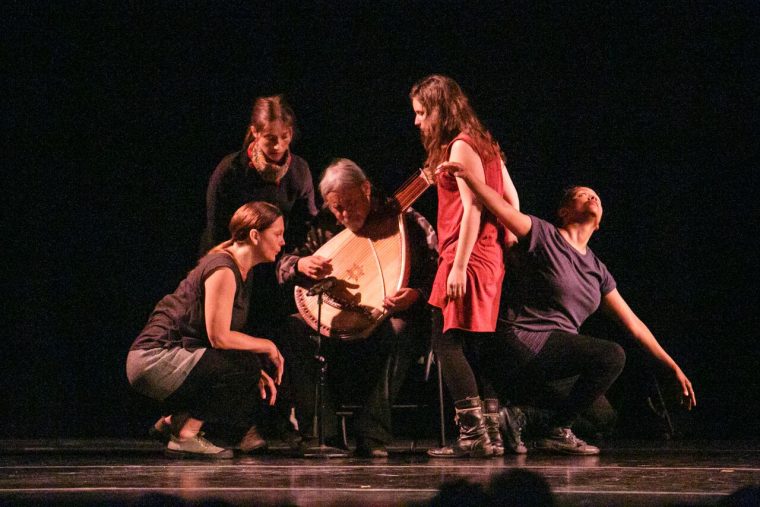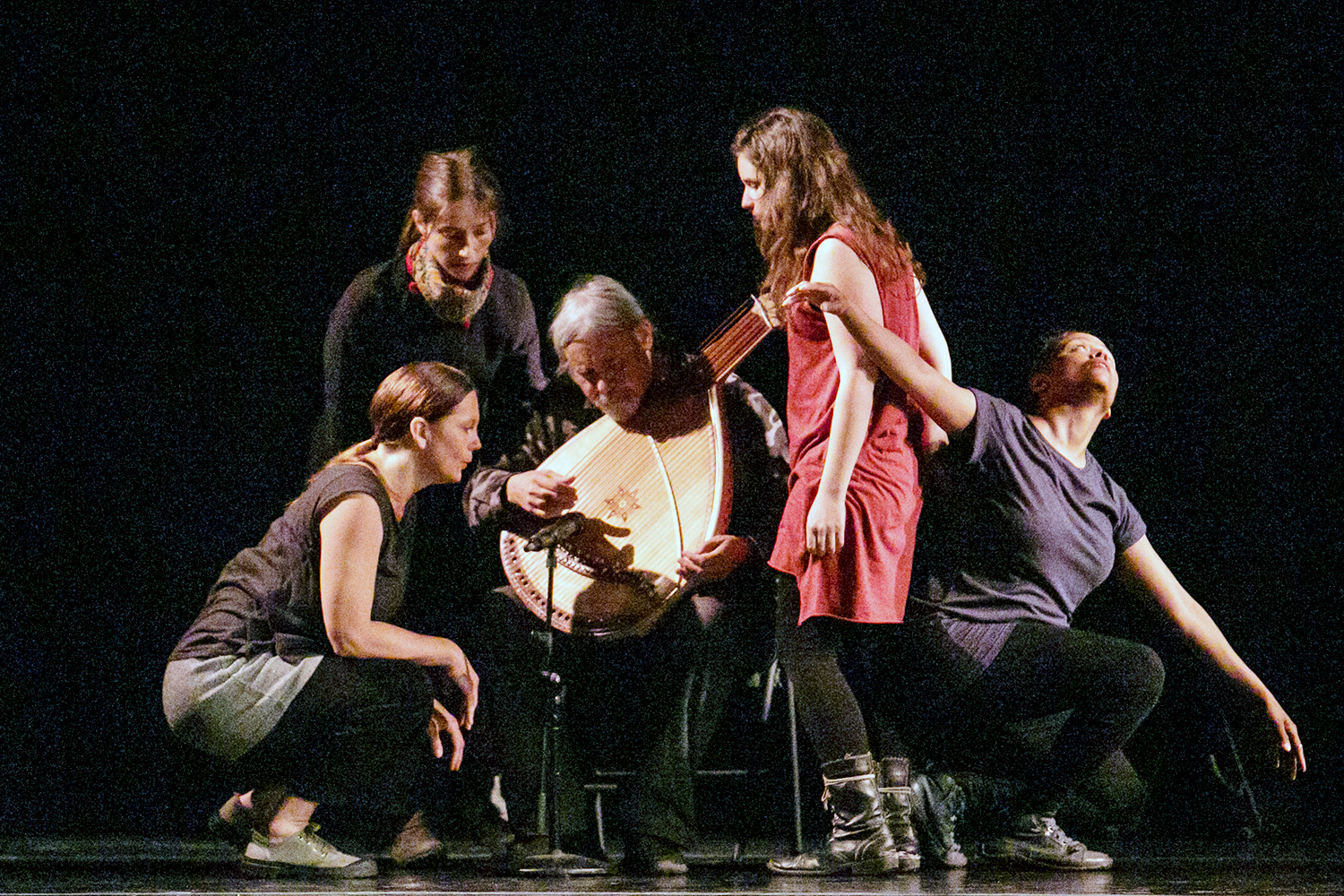Kolcio, Stanton Create, Perform “Steppe Lands” as Freedom Dance Ukraine


A Connecticut dance event offered Associate Professor of Dance Katja Kolcio an additional way to explore her ongoing dance/movement project highlighting the effect of political forces at work in Ukraine.
Last summer, Kolcio invited colleague and Associate Professor of Dance Nicole Stanton to join with two other dancers, both with ties to Ukraine, to create a dance. This event, Dance for Peace, was sponsored by Artists for World Peace, an organization founded and led by Wendy Black-Nasta P’07, with music director Robert Nasta MA ’98, P’07.
Kolcio, who holds a doctorate in somatics, places the dance they created, “Steppe Land,” in the context of her project in Ukraine, where she has familial roots. Focusing on the role of physical engagement and creativity in social politics, Kolcio had recently taken her sabbatical in that country, working with those affected by the invasion and forced annexation of Crimea by Russian President Vladimir Putin.
There, Kolcio found a colleague in movement artist Elvira Demerdzhy, who ran an improvisational movement collective in Simferopol, Crimea, until hostility toward Tatars—her ethnic group—forced her to leave Crimea to live in Ukraine. “Together with thousands of refugees displaced by the war with Russia, Elvira is struggling to make sense of things,” says Kolcio, noting that Demerdzhy is resilient. “She wrote ‘You don’t have power for sorrow or for [self-pity], you just stand up and save your life. Dance is a way to make sense of things when words don’t suffice.”
Kolcio’s work in Ukraine is about just that—finding resilience through using one’s body to make sense of the world. Her methodology, somatics, offers a way to “integrate body and mind but also integrate self and environment. It helps one feel one’s weight in the world and one’s possibilities and creative impact in the world. It’s about developing creative agency.”
Back in the States last spring, Kolcio welcomed Demerdzhy on her first visit, eager to provide a full experience of dance in America. The two saw Visiting Artist in Dance and the College of East Asian Studies Eiko Otake P’07,’10, perform in New York City and they also visited Jacob’s Pillow Dance Festival. Then came the invitation from Black-Nasta’s group to create and perform their own dance.
It was a perfect opportunity: “I was interested in working with a group of artists from different backgrounds, experiences and perspectives, and specifically to ask ‘in what ways might movement research and performance inform and deepen our understanding of place and displacement?’”
“He performed a song he’d recently discovered from the occupied Donbas region of Ukraine. It was very cyclical, and so it was about coming back, and coming back, and coming back, to the question of—Where are we going?” she recalls. “It’s interesting how sound became so important in the dance composition—not words but sound from every direction. Elvira wrote, ‘Our dance, “Steppe Lands,” was an effort to make sense of the situation for ourselves. I thought once that the lives of thousands of people after annexation reminds me of thousands of different sounds that are filling the space, but which cannot.’”
Stanton also felt the success of this cross-cultural collaborative venture. “It was an honor for me to work with the amazing, creative and accomplished artists Katja assembled, and a gift to perform alongside such exceptional dance artists in the concert as a whole! The idea of the arts at work for our communities, for justice and peace at a time when there is so much hate and violence gives me hope.”

